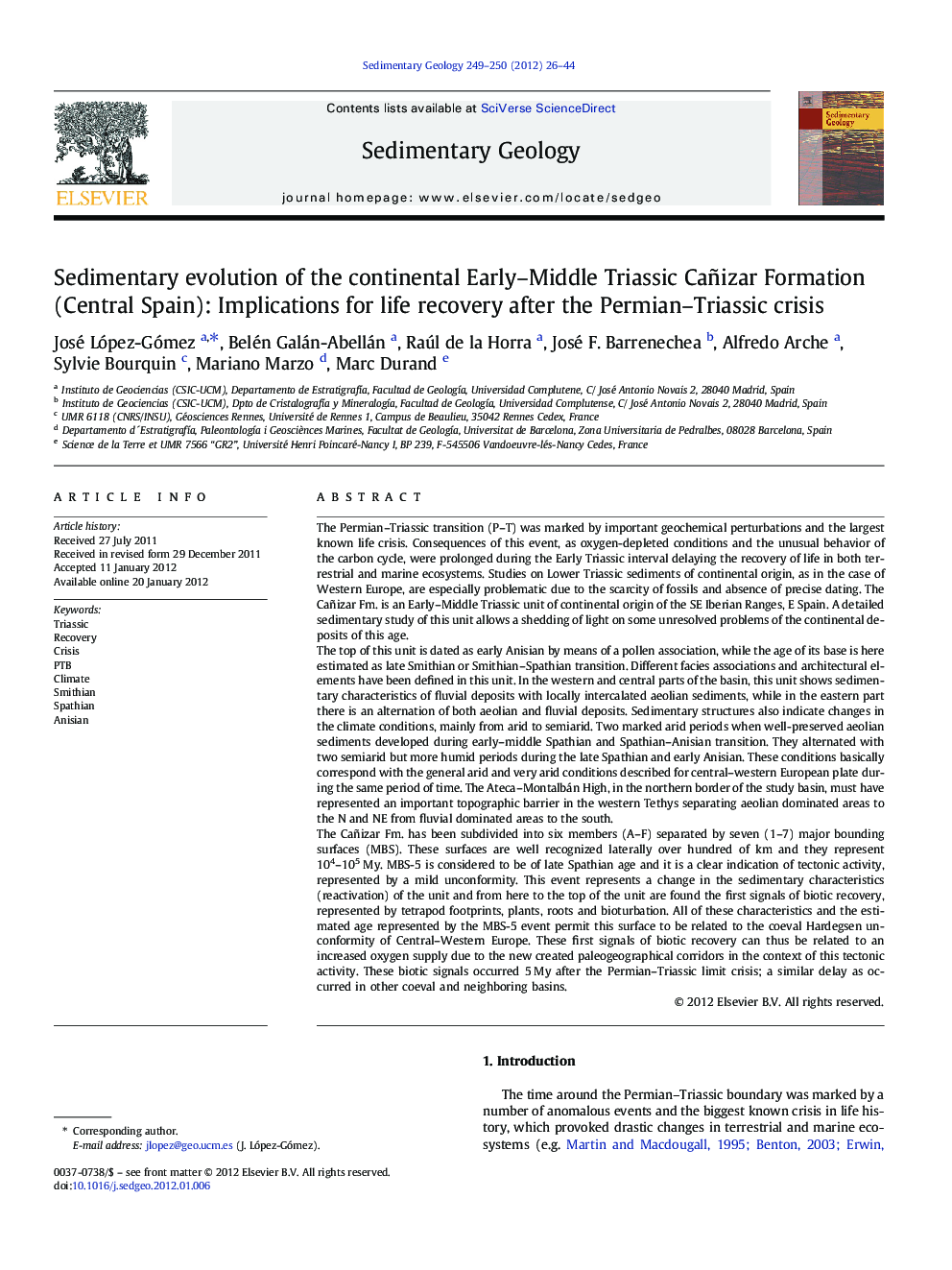| Article ID | Journal | Published Year | Pages | File Type |
|---|---|---|---|---|
| 4689840 | Sedimentary Geology | 2012 | 19 Pages |
Abstract
The Cañizar Fm. has been subdivided into six members (A-F) separated by seven (1-7) major bounding surfaces (MBS). These surfaces are well recognized laterally over hundred of km and they represent 104-105Â My. MBS-5 is considered to be of late Spathian age and it is a clear indication of tectonic activity, represented by a mild unconformity. This event represents a change in the sedimentary characteristics (reactivation) of the unit and from here to the top of the unit are found the first signals of biotic recovery, represented by tetrapod footprints, plants, roots and bioturbation. All of these characteristics and the estimated age represented by the MBS-5 event permit this surface to be related to the coeval Hardegsen unconformity of Central-Western Europe. These first signals of biotic recovery can thus be related to an increased oxygen supply due to the new created paleogeographical corridors in the context of this tectonic activity. These biotic signals occurred 5Â My after the Permian-Triassic limit crisis; a similar delay as occurred in other coeval and neighboring basins.
Related Topics
Physical Sciences and Engineering
Earth and Planetary Sciences
Earth-Surface Processes
Authors
José López-Gómez, Belén Galán-Abellán, Raúl de la Horra, José F. Barrenechea, Alfredo Arche, Sylvie Bourquin, Mariano Marzo, Marc Durand,
